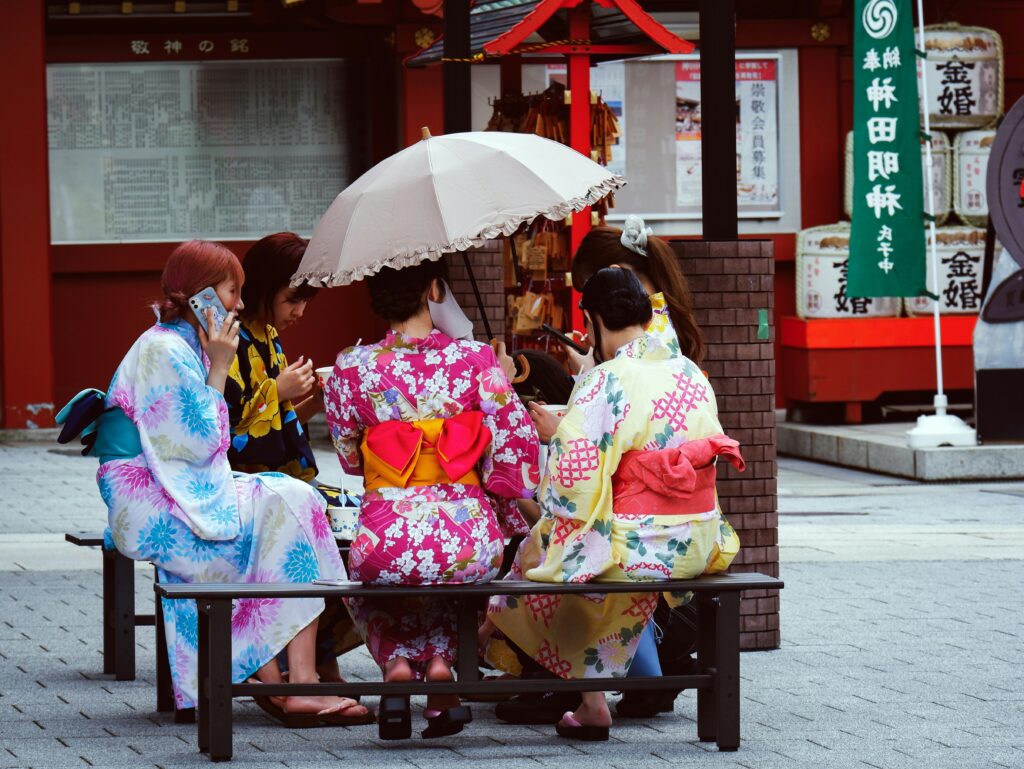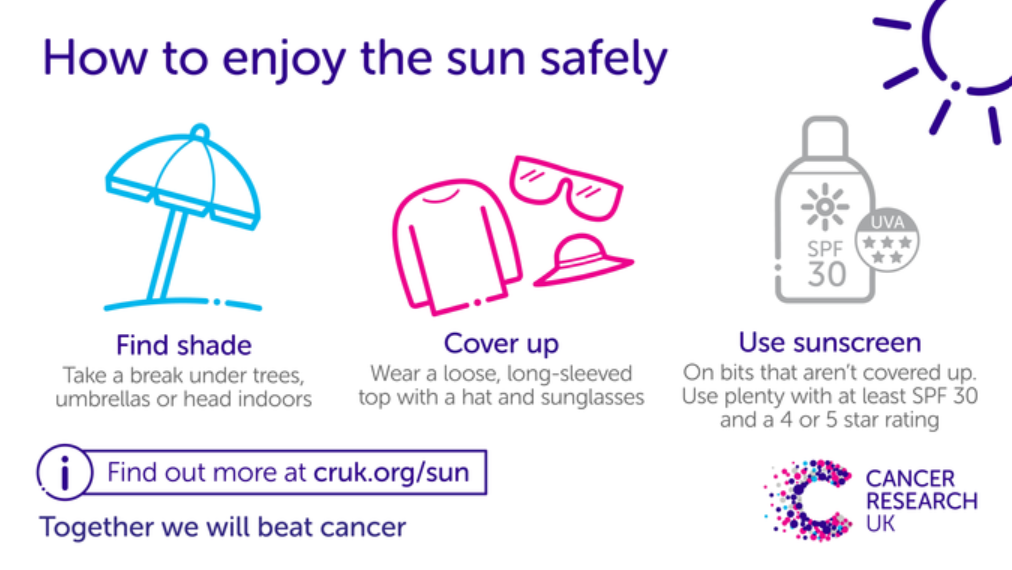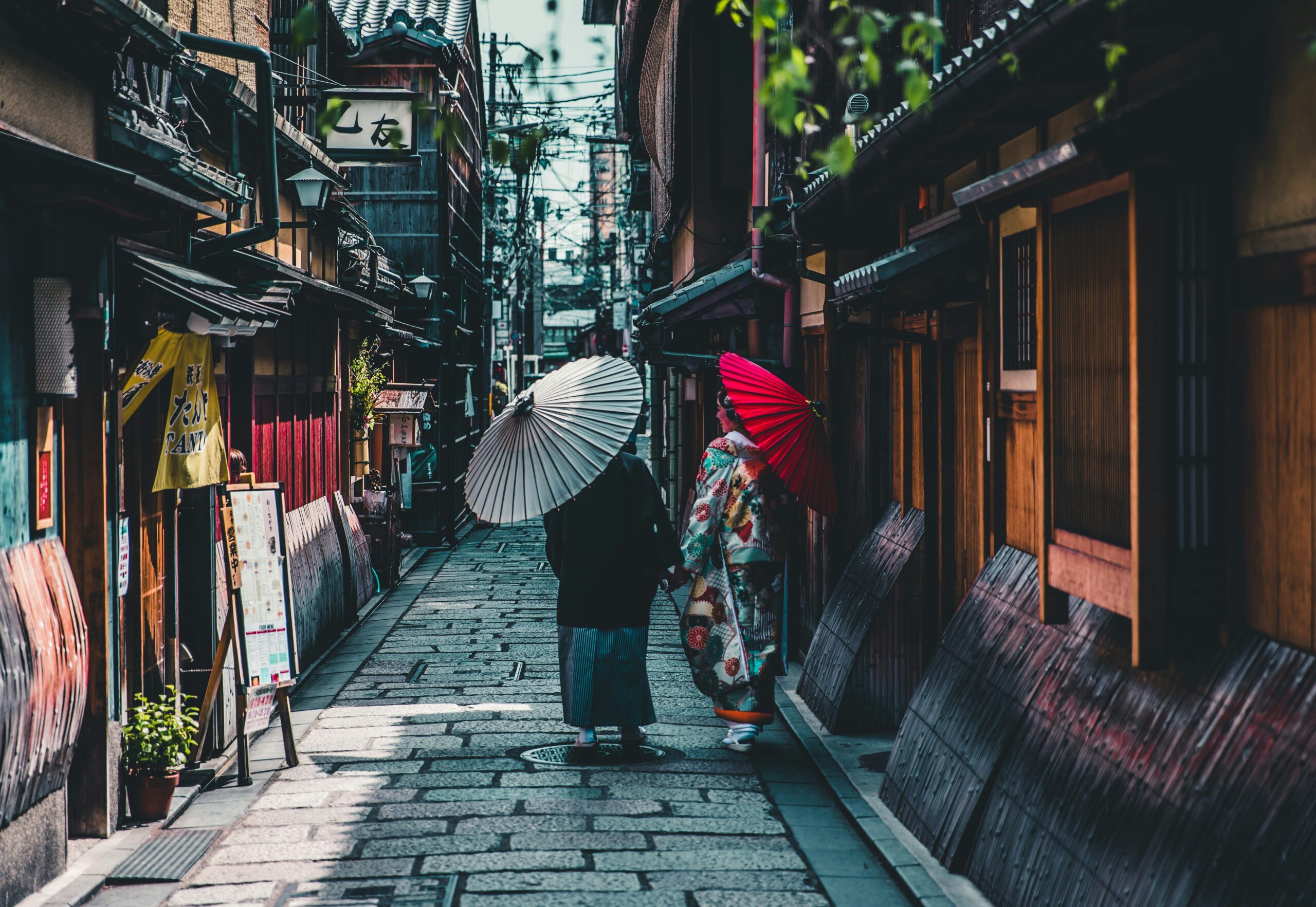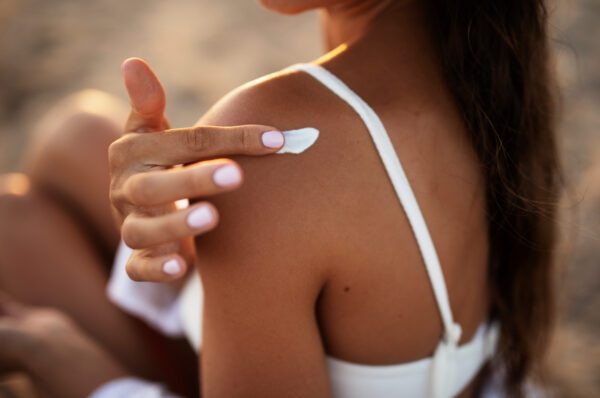On the rainy streets of the UK, umbrellas are a familiar sight – always at the ready to shield us from a downpour. But would you use your trusty brolly to protect you from the sun?
If you were to head over to Japan on a bright day, you’d find an array of colourful umbrellas and parasols, shading the handler below from the sun’s rays. It’s a charming tradition, isn’t it?
But just how effective are these parasols at providing essential sun protection?
A brief history of Japanese umbrellas
During Japan’s Heian Period (794-1185), bamboo and paper umbrellas, known as wagasa, were introduced from China. These exquisite accessories were painstakingly made over several months and ornately decorated with colourful strings woven between the ribs in the umbrella’s canopy.
Initially a symbol of status among the elite seeking respite from the intense summer sun, the umbrellas gradually entered the lives of ordinary people at the beginning of the Edo period (1600-1868).
However, the popularity of traditional wagasa waned with the arrival of European-style umbrellas during the Meiji period (1868-1912), and today, plastic convenience store umbrellas tend to dominate the streets.


The modern-day parasol
The traditional wagasa remains a cherished symbol of Japanese culture and you’ll still find them at wedding processions, outdoor tea ceremonies and festivals. However, the higasa, or sun umbrella, has evolved significantly over time. With sturdier structures, UV-blocking fabrics and even dual-purpose features for use in all weather conditions.
While traditionally perceived as a feminine accessory, modern higasa designs are more neutral and reserved to encourage men to also seek shelter from the harsh sun.
In fact, in 2013, amidst another scorching summer, there was a notable surge in the number of men using parasols. This trend resulted in the buzzword of the year being, “higasa-danshi,” or “parasol boy,” signifying a cultural shift towards embracing sun protection practices regardless of gender.
The Ministry of the Environment has also played a crucial role in advocating for the widespread use of parasols as a preventive measure against heatstroke.
With dangerous heat waves becoming increasingly common, they emphasise that using a parasol with a light-blocking rate of 99% or higher can reduce sweating by up to 17% in 30-degree weather.


How effective are umbrellas at providing sun protection?
Seeking shade is a common practice used to avoid direct sunlight, but many people assume their skin will be fully protected if they simply stay sheltered.
While a parasol or umbrella may shield against direct exposure, UV rays can still penetrate some fabrics and reflect off the ground.
A study conducted by Hao Ou-Yang for Johnson & Johnson compared the level of sun protection between using only an umbrella versus only using sunscreen. The clinical study revealed that, during 3½ hours of sun exposure, 78% of participants sheltered under a beach umbrella developed sunburn, whereas only 25% of participants using sunscreen experienced sunburn.
This study emphasises that neither shade nor sunscreen alone completely prevents sunburn and highlights the importance of combining multiple sun protection measures to achieve optimal protection against harmful UV rays.


Final thoughts
With increasing awareness and advancements in technology, manufacturers have transformed the traditional Japanese parasol into an accessory that offers enhanced protection suitable for everyone.
But it’s important to remember, that seeking shelter from the sun under trees, umbrellas or parasols should not be used as a substitute for using a high-factor, broad-spectrum sunscreen.
While it may take some time for the UK to adjust to the sight of umbrellas in the sunshine, the reality of record-breaking temperatures becoming the norm in the West suggests additional protective measures may soon become necessary for us all.
Find out more about how to enjoy the sun safely with these guidelines from Skin Cancer Research UK.




